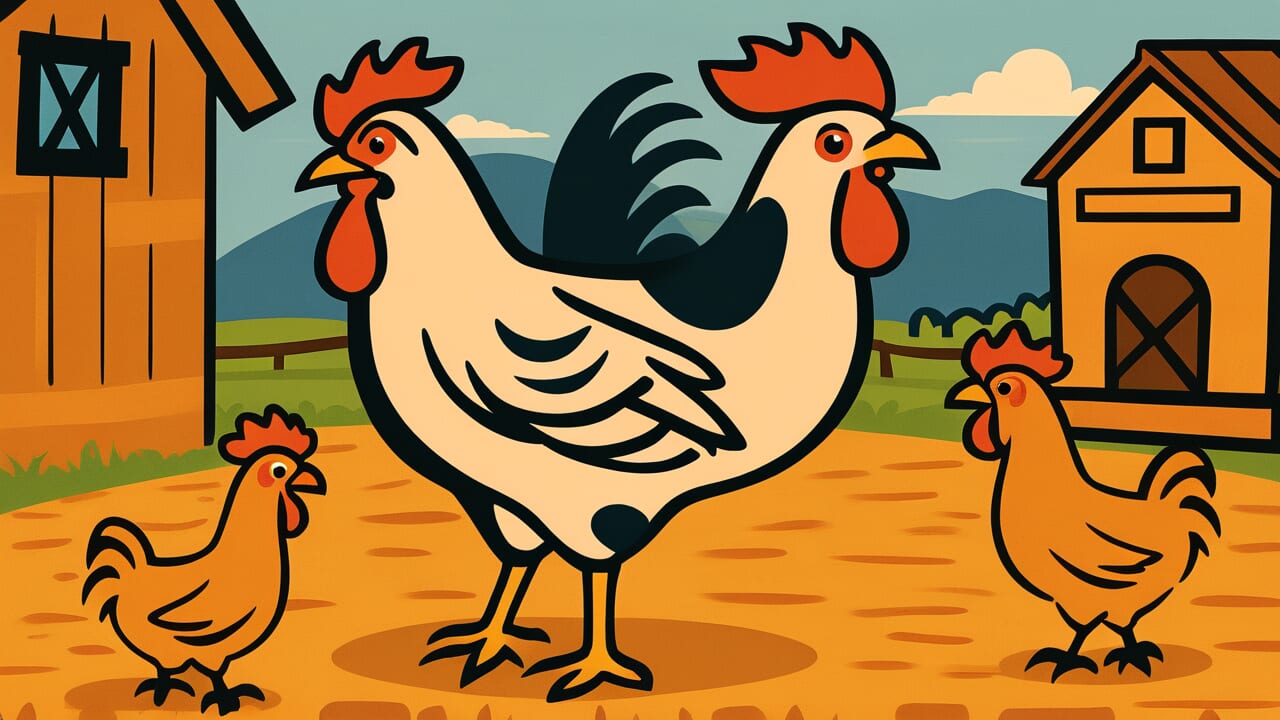How to Read “As the old cock crows so doth the young”
As the old cock crows so doth the young
[As the old cock crows so duth the young]
The word “doth” is an old form of “does.”
Meaning of “As the old cock crows so doth the young”
Simply put, this proverb means children copy their parents’ behavior and attitudes.
The saying uses farm imagery to make its point. An old rooster teaches young roosters how to crow. In the same way, children watch their parents closely. They learn by copying what they see and hear every day.
This wisdom applies everywhere in modern life. Children pick up their parents’ habits with money, work, and relationships. If parents are kind to others, children often become kind too. If parents complain constantly, children may learn to complain as well. The pattern happens naturally without anyone planning it.
What makes this insight powerful is how automatic it becomes. Parents don’t always realize they’re teaching through their daily actions. Children absorb lessons from watching how parents handle stress, treat strangers, or solve problems. The strongest teaching often happens through example rather than words.
Origin and Etymology
The exact origin of this proverb is unknown, though it appears in various forms across centuries. Early versions used the rooster imagery because farm life was familiar to most people. Roosters were common symbols for teaching and leadership in many traditional sayings.
This type of wisdom emerged when families lived and worked closely together. Children spent most of their time around parents and grandparents. The lessons of daily life passed naturally from one generation to the next. Proverbs like this helped people understand these patterns.
The saying spread through oral tradition before appearing in written collections. Different regions developed slightly different versions of the same basic idea. The core message remained constant even as the exact words changed. Today we still use this wisdom to explain how family patterns continue across generations.
Interesting Facts
The word “cock” in this proverb refers specifically to a male rooster, not just any chicken. Roosters were chosen for this saying because they’re known for their distinctive crowing behavior. Young roosters learn their crowing patterns by listening to older birds in the flock.
The old English word “doth” comes from Middle English and was the standard form of “does” for centuries. This grammatical structure shows the proverb’s age and traditional roots.
Usage Examples
- Mother to neighbor: “I see their son starting fights at school just like his father does at work – as the old cock crows so doth the young.”
- Teacher to principal: “The student cheats on every test while her parents lie about her attendance – as the old cock crows so doth the young.”
Universal Wisdom
This proverb reveals a fundamental truth about how humans learn and develop. Children are naturally wired to copy the adults around them because imitation was crucial for survival throughout human history. Young people who learned quickly from their elders were more likely to survive and thrive.
The wisdom goes deeper than simple copying though. It touches on how entire family cultures get passed down without anyone consciously deciding to teach them. Parents often find themselves repeating phrases their own parents used. They handle situations the same way they saw handled growing up. This happens even when people promise themselves they’ll do things differently.
What makes this pattern so persistent is that it operates below conscious awareness most of the time. Children absorb not just what parents say, but how they say it. They notice tone of voice, body language, and emotional reactions. These subtle lessons often prove more powerful than direct instruction. The proverb reminds us that teaching happens constantly through living, not just through formal lessons. Every generation shapes the next one simply by being themselves.
When AI Hears This
Leaders unknowingly create invisible blueprints that spread through entire organizations. A boss who interrupts meetings teaches everyone that cutting people off works. Their small daily habits become the unwritten rules everyone follows. These behaviors multiply and strengthen as they pass from person to person.
Humans copy authority figures without realizing they’re doing it. We absorb not just what leaders say, but how they breathe during stress. Their casual reactions become our automatic responses to similar situations. This hidden copying system runs constantly in the background of human relationships.
What fascinates me is how humans accidentally program their own futures. Today’s small leadership choices become tomorrow’s widespread cultural problems or solutions. A single person’s way of handling conflict can shape entire generations. Humans are both prisoners and creators of these invisible behavior chains.
Lessons for Today
Understanding this wisdom starts with recognizing how powerful everyday modeling really is. Parents and caregivers influence children most through their regular habits and reactions. This means the small daily choices matter more than occasional big speeches about values. Children notice how adults treat service workers, handle disappointment, or respond to stress.
The insight becomes especially important in relationships and families. Adults who want to influence young people positively need to examine their own patterns first. Complaining about children’s behavior while displaying the same behavior rarely works. Instead, changing your own approach often leads to natural changes in how children respond. This requires patience because the effects take time to show up.
On a larger scale, this wisdom applies to communities and workplaces too. New employees learn company culture by watching how established workers behave. Neighborhood attitudes spread through daily interactions and examples. Leaders shape entire groups through their consistent actions more than their official policies. The proverb reminds us that influence flows naturally from older to younger, from experienced to inexperienced. Recognizing this pattern helps everyone take their modeling role more seriously while being patient with the gradual nature of real change.



Comments